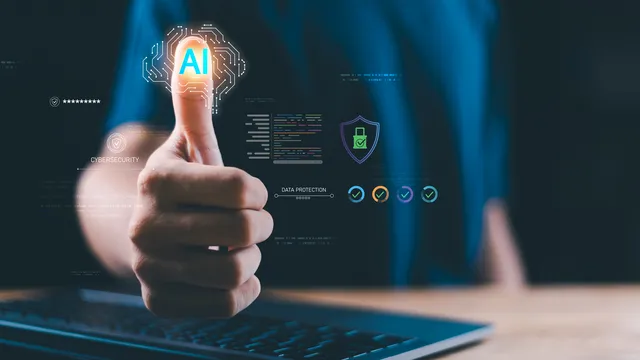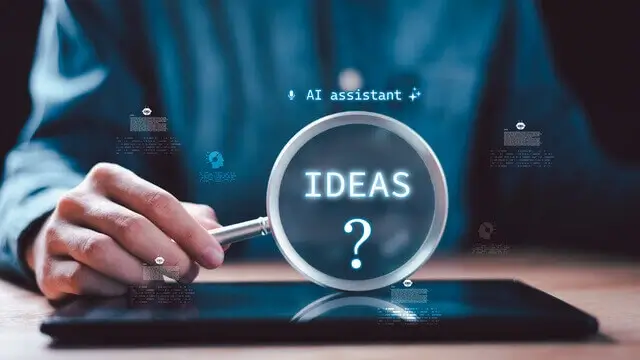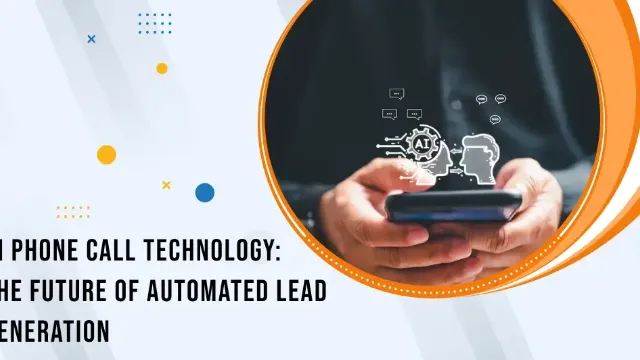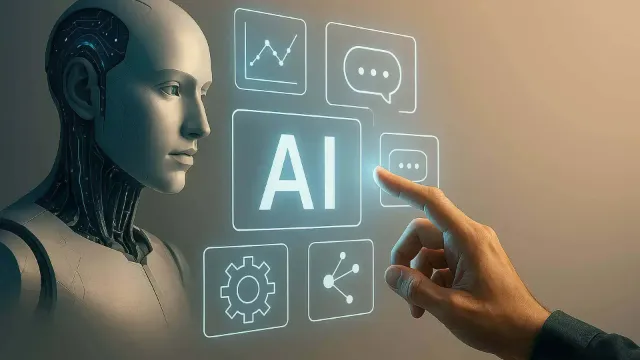How AI Aims to Help People, Not Just Make Money
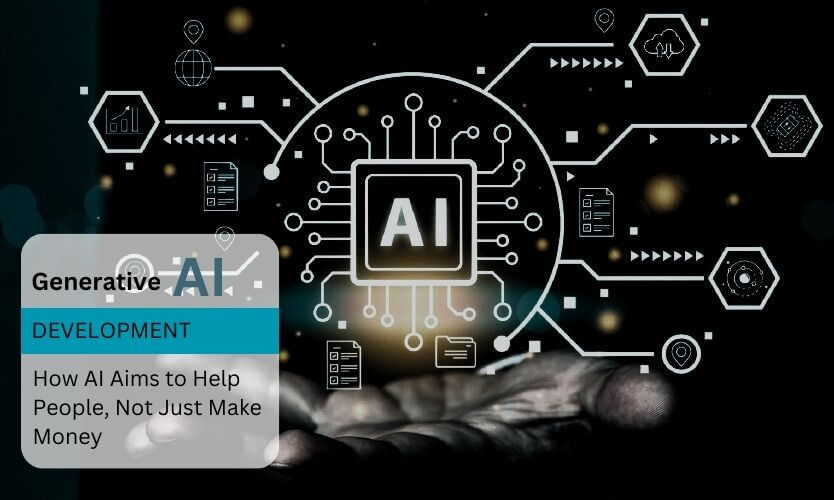
As AI capabilities evolve fast, there is a rising push to guarantee that these powerful technologies help people holistically rather than simply corporate profits. Know AI’s Benefits
Let us explore the promising potential for AI to improve lives when guided by inclusive ethics and values – as well as risks that require diligent oversight.
Democratizing Access to AI’s Benefits

Historically, transformative technologies have often exacerbated inequalities, disproportionately benefiting affluent populations first.
But consciously democratizing access to AI’s benefits could yield more equitable progress.
- Open datasets fueling algorithm training that reflects diverse populations and use cases help systems serve people equally, not just advantaged demographics. This prevents bias and exclusion.
- Generative AI development company tools and services offered freely or at low cost empower broad access, not just privileged users.
- Nonprofits are also providing AI services like chatbots and image/video generation to aid underserved groups.
- Inclusive product design that considers the full scope of human needs and abilities expands AI’s usefulness for people with disabilities, language barriers, limited tech literacy and other access challenges. Avoiding “one-size-fits-all” solutions promotes equity.
- Multilingual systems enable people across languages and cultures to contribute to and benefit from AI tools by training models on diverse linguistic data.
This prevents English-centric dominance from excluding most worldwide users.
- Participatory technology shaping gives citizens opportunities to provide input and oversight into how AI systems impacting their lives get designed, deployed and governed.
This ground truth guides ethical technology in the public interest.
When access to AI tools and training data is exclusive, the resulting systems often reflect the limited perspectives and priorities of privileged developers.
However inclusive practices can counter bias-yielding exclusion and direct these technologies toward empowering people more universally.
AI Augmenting Key Services
Applied thoughtfully, AI holds revolutionary potential to enhance public services and sectors fundamental to human development like healthcare, education, finance and more.
- In healthcare AI is improving patient diagnosis, enabling personalized treatment plans and accelerating medical research to save lives.
- Chatbots even provide basic health advisory services in underserved regions.
However, safeguards must secure patient privacy while testing systems rigorously before real-world deployment.
- For education AI tutors adaptively teach students math, science and other skills – potentially reducing gaps for disadvantaged learners.
- Generative AI development company even creates customized lessons and study aids.
However, care is needed to validate quality and supplement human teachers who impart social-emotional skills that machines lack.
- Financial inclusion applications use alternative data and AI underwriting to expand access to credit, insurance and other services benefiting unbanked and underbanked populations.
- This must balance expanding finance while preventing exploitative or discriminatory lending.
- Smart grids and optimizing energy use with AI help provide affordable, sustainable electricity – especially when inclusive infrastructure avoids centralizing benefits in wealthy enclaves.
- Equitable access to clean, reliable power enables prosperity.
- Decision AI support tools for policymakers and leaders leverage AI modelling of social systems to inform decisions improving collective welfare, from pandemic response to fighting poverty.
And However, oversight is key to ensure recommendation systems serve all people’s interests.
When embedded in key public and private institutions under inclusive governance, AI could massively amplify its capabilities to ethically serve all people, not just a privileged subset. But this demands purposeful design.
AI-Powered Tools Serving Diverse Needs

Consumer technologies from search to social media showcase AI’s potential to empower everyday users – if inclusive values guide development.
- Accessible communications apps like automatic closed captioning and text-to-speech aid for the elderly, people with disabilities and other groups to connect and express themselves through modern technology, not be excluded.
- Inclusive digital assistants designed to understand diverse users and use cases – not just serve the young, able-bodied or English-fluent – could make AI helpers universally beneficial, avoiding bias.
- Generative AI Content creation tools democratize media production so anyone can make art, videos, marketing materials and more to share their talents and ideas – if responsible design prevents misuse and displacement of creatives.
- Recommender systems that suggest media, products and information tailored to individual interests provide personalized discovery. However, transparency, auditability and user controls are vital to prevent manipulation or polarization.
- Language preservation through AI translation, speech synthesis and conversational systems can aid endangered and minority languages to survive amid globalization – if ethically guided.
Every AI should empower expression, access information and fulfil the needs of all people – not homogenize humanity into homogeneous data points. This demands diversity and self-determination.
AI for Responsible Innovation and Progress
When guided by inclusive ethics and values, AI can accelerate scientific discoveries and responsible technological breakthroughs serving humanity’s long-term interests.
In biotechnology, AI enables rapid simulation of drug interactions, protein folding and gene editing outcomes to speed medical research safely.
However, caution is vital when AI techniques facilitate genetic engineering or human enhancement interventions.
For materials science, AI modelling and robots accelerating the design and testing of new compounds, alloys and nanostructures could lead to sustainable solutions.
However responsible oversight helps ensure new substances pose no health or environmental risks.
AI-based simulation platforms replicating physical systems help engineers, designers and architects optimize buildings, vehicles, infrastructure and products for efficiency, sustainability and safety pre-launch. But real-world testing remains crucial.
Renewable energy forecasting with AI and monitoring defects in solar panels, turbines and batteries boost clean power reliability.
Overall, AI-enabled advances must align with social needs and environmental limits, not fuel blind exponential tech growth.
Applied carefully, AI can expedite responsible progress in improving lives. But guiding innovation prudently, not racing ahead recklessly, remains key.
AI Champions Advancing Justice
AI also offers tools to empower activists, journalists, policy analysts and reformers striving to advance justice in society.
Algorithmic auditing enables testing of biased/unfair decision-making systems and quantification of harm – though audibility by design better prevents problems proactively.
Data analysis automation helps identify discrimination, pollution, corruption and other critical issues to catalyze accountability.
However, care is needed to avoid misinterpretation and false positives.
Predictive modelling of policy impacts can guide reforms tackling inequality, environmental damage and injustice.
However, activism should determine desired goals, not just accept AI-recommended approaches.
Generative media creation allows nonprofits and citizen journalists to easily produce engaging media that spreads awareness of societal problems – if the technology’s risks are also weighed thoughtfully.
Overall, while AI offers tools to champions of justice, solely technical solutions cannot substitute for moral leadership – or thoughtful policymaking integrating diverse perspectives.
Technology alone cannot bring justice. But aligned with ethical goals, AI could help reformers diagnose problems, model solutions, and engage the public productively.
Also Read: How to use Artificial Intelligence in SEO Everything you need to know
Cultivating Humanity Alongside AI
As AI’s performs more tasks associated with human intelligence, anxieties persist over the technology eroding essential aspects of our humanity – capacities like creativity, emotional intelligence and contemplative wisdom.
However, thoughtfully cultivated, our humanity could thrive alongside advancing AI, just as past technologies like the printing press and the internet have expanded human potential when guided inclusively.
Some proposals:
- Reformed education developing interpersonal skills, philosophy, creativity and critical thinking cultivates human talents AI lacks – making humans more valued partners, not obsolete.
- AI-powered tools expanding access to knowledge, media creation, and discovery promote human curiosity and achievement. But risks of dependency must be weighed.
- Thriving arts & culture nourish human creativity and meaning-making.
- Generative AI could aid human creators and expand participation – if policies prevent the displacement of creatives or homogenization of culture.
- Ethics development through teaching philosophy and self-reflection helps society navigate AI’s risks wisely. Understanding moral reasoning and biases is crucial.
- Social-emotional learning builds human capacities for relationship-building, empathy and leadership – talents AI currently lacks.
- These skills become more vital amid technology’s spread.
- Wisdom traditions like mindfulness meditation help ground society in humility and higher purpose during turbulent transitions – countering distraction and algorithmic thinking.
- At their best, ancient contemplative practices develop virtues and wholeness. These could be cultivated alongside AI’s rise thoughtfully.
Overall, integrating AI into society wisely demands evolving education, ethics, policy and culture – not just advancing technology.
If oriented toward human development, AI could enlighten our understanding, creativity and vision – liberating more time for meaning, relationships and self-actualization.
But we must direct these tools consciously, not relinquish agency blindly.
Navigating AI’s Impact on the Workforce
As AI automates more tasks and jobs, thoughtful policies and corporate practices are needed to support worker transitions in this time of technological disruption:
- Education and reskilling programs can help the workforce prepare for new roles integrating creatively with AI systems. Subsidies making continuing education affordable are key.
- Portable benefits that are not dependent on a single employer give workers the flexibility to shift between projects, gigs and roles in a dynamic job market.
- Labour protections should be modernized for on-demand, remote and AI-driven new forms of work to prevent exploitation.
- Corporate ethics demand firms investing in automation provide displaced workers ample transition support, not just abandon them jobless.
- Sustainable businesses benefit from retaining institutional knowledge.
- New collaborative roles integrating AI’s capabilities thoughtfully alongside human strengths and oversight create quality hybrid jobs, preventing the full replacement of labourers by machines.
- Incentives for small businesses’ adoption of AI tools level the playing field against large firms and create new entrepreneurship opportunities.
Overall, AI should enhance human productivity and opportunity, not replace humans fully from work.
With foresight and planning, mass unemployment can be averted while realizing automation’s gains.
Also Read: Artificial Intelligence: What To Expect In The Future?
Prioritizing AI Safety and Oversight
To develop AI responsibly, rigorous approaches to safety and oversight are essential:
- Testing environments using simulation, redundancy and isolated real-world conditions enable safer AI experimentation, preventing uncontrolled public harm from immature systems.
- Validation frameworks like A/B testing continually monitor AI system performance and bias relative to key safety metrics. Problem areas can then be identified and fixed.
- Debugging tools help interpret model behaviour, diagnose errors and fix defects through techniques like explainability, 3D visualization and iterative improvement of architectures and training processes.
- Multistakeholder governance through independent oversight boards, ethics reviews and mechanisms for impacted groups to provide input guides the deployment of high-stakes AI systems accountable to diverse public interests.
- Legal liability should incentivize those developing and operating AI systems to implement sufficient safety measures through enforceable regulations, fines and penalties.
- Authentication of synthetic media using digital watermarking and provenance tracking helps prevent the misuse of generative AI for fraud, scams and misinformation – while enabling beneficial creativity.
Overall, a combination of ethical priorities, technical rigour and accountability frameworks is needed to develop AI safely in the public interest, weighing all risks and stakeholders inclusively.
Risks Requiring Diligent Oversight
Despite the promising potential, AI systems also introduce risks demanding diligent oversight for the technology to benefit humanity inclusively.
Bias and discrimination
If datasets and algorithms encode prejudiced assumptions, AI can amplify injustice. Proactive audits, inclusive engineering practices and representation in design help avert harm.
Job displacement
Automating tasks with AI without supporting worker transitions could concentrate gains among tech firms and exacerbate inequality.
Education, retraining programs and new collaborative roles help integrate human labourers with AI systems, not replace them.
Privacy erosion
Collecting, aggregating and retaining user data risks surveillance and abuse.
Data minimization, decentralized processing and enforceable privacy rights help secure consent while enabling AI innovation.
Manipulation
AI content designed to addict and exploit human weaknesses for profit or influence presents dangers.
Transparency over capabilities, third-party audits and empowering user agency through choice and education help maintain trust and wisdom.
Also Read: Best Benefits of Chatbots for Online Customer Service
Misuse
Malicious actors could employ AI to forge content or identities for fraud, scams and more.
Authentication standards, content moderation and constraints on generative models are important countermeasures.
With vigilance, multistakeholder oversight and inclusive governance, risks from AI systems can be mitigated to realize their benefits justly.
But this demands purposeful, ethical design – not naive optimism or reliance on pure market incentives.
How do you think AI should be guided to best serve humanity’s interests broadly – not just a privileged few?
What opportunities excite you? What risks concern you? How can we expand access to AI equitably while mitigating downsides proactively?
AI holds the potential to uplift humanity. But we must guide its trajectory wisely. What are your hopes and proposals?
Let us know in the comments below!



